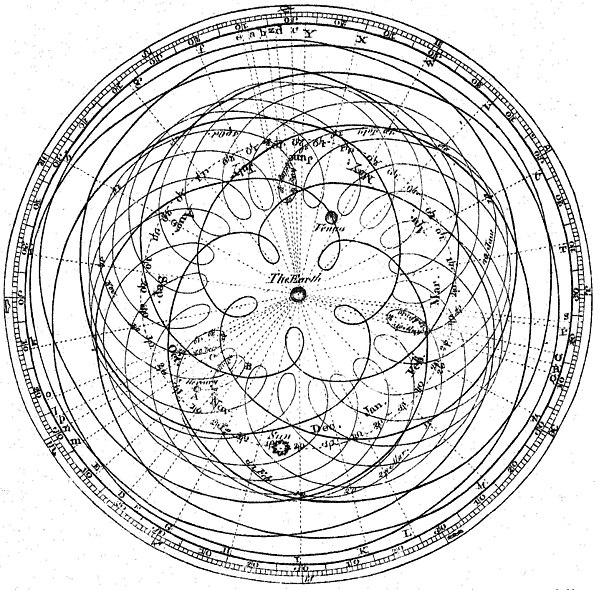Fixed stars
Videos
Page
In astronomy, the fixed stars are the luminary points, mainly stars, that appear not to move relative to one another against the darkness of the night sky in the background. This is in contrast to those lights visible to naked eye, namely planets and comets, that appear to move slowly among those "fixed" stars.

Stars in the night sky appear to be attached to a dark background, the Celestial dome

The complexity to be described by the geocentric model

Kepler, Johannes. Mysterium Cosmographicum, 1596. Kepler's heliocentric rendition of the cosmos, containing an outermost "sphaera stellar fixar," or sphere of fixed stars.

Copernicus, Nicolaus. On the Revolutions of the Heavenly Spheres. Nüremberg. 1543. Print copy of Copernicus's work showing the model of the universe with the Sun in the center and a sphere of "immobile stars" on the outside according to his theory of the cosmos.
Star
Videos
Page
A star is a luminous spheroid of plasma held together by self-gravity. The nearest star to Earth is the Sun. Many other stars are visible to the naked eye at night; their immense distances from Earth make them appear as fixed points of light. The most prominent stars have been categorised into constellations and asterisms, and many of the brightest stars have proper names. Astronomers have assembled star catalogues that identify the known stars and provide standardized stellar designations. The observable universe contains an estimated 1022 to 1024 stars. Only about 4,000 of these stars are visible to the naked eye—all within the Milky Way galaxy.

Image of the Sun, a G-type main-sequence star, the closest to Earth

A star-forming region in the Large Magellanic Cloud

Stars in the night sky

Infrared image from NASA's Spitzer Space Telescope showing hundreds of thousands of stars in the Milky Way galaxy